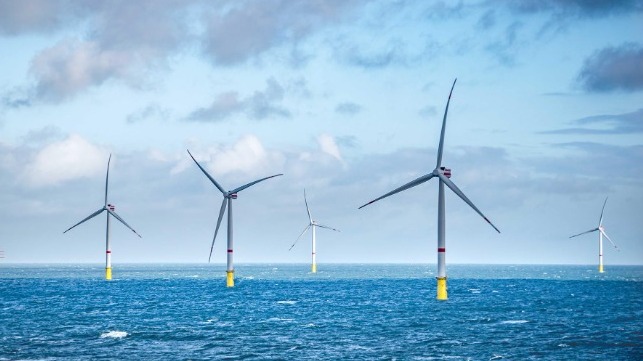U.S. Dept. of Interior Withdraws Vineyard Wind's Permit Application

The U.S. Department of the Interior has decided to classify the permit application for Vineyard Wind - the first full-scale offshore wind farm in the United States - as "formally withdrawn."
According to Bloomberg, which first reported the announcement, the decision could delay the startup of Vineyard Wind by another six to 18 months - in addition to the 17-month delay that Interior already implemented for an expanded Environmental Impact Statement (EIS) review.
The decision follows Vineyard Wind's December 1 request to temporarily halt the permit review so that it could submit changes reflecting a new model of wind turbine that will be used in the project. At the time, Vineyard Wind's backers expected the voluntary pause to add a few weeks to the process, and said that it would not have an effect on the overall development timetable. "Taking this step now avoids potentially more federal delays and we are convinced it will provide the shortest overall timeline for delivering the project as planned,” said Vineyard Wind CEO Lars T. Pedersen on December 1. “We intend to restart the BOEM process from where we left off as soon as we complete the final review.”
Instead, Interior has opted to treat the Vineyard Wind application as "formally withdrawn," setting back the start date for project and for the U.S. offshore wind industry as a whole. Last year, Interior's Bureau of Ocean Energy Management expanded the scope of Vineyard Wind's EIS review to consider the cumulative effects of all adjacent offshore wind projects, not just Vineyard Wind. The regulatory process for this first-of-its-kind project serves as a review for the entire industry; until it receives final approval, many key stakeholders (including many American financiers) are waiting on the sidelines.
BOEM had been expected to issue its final decision on Vineyard Wind's EIS by January 15. The new timetable means that the green light for the project will come under the administration of president-elect Joe Biden, who has endorsed both U.S. offshore wind development and the expansion of Jones Act shipping. When offshore wind begins in earnest off the U.S. East Coast, the U.S. maritime industry stands to benefit from billions of dollars in shipbuilding and operating revenue for a new class of American-built offshore wind vessels.
In a recent study of opportunities and challenges for the U.S. offshore wind industry, stakeholders told the Government Accountability Office (GAO) that obtaining funding for new, Jones Act-compliant wind turbine installation vessels - which may cost up to $500 million - has been challenging, in part due to uncertainty about the timing of federal approval for projects. Some of these stakeholders told GAO that if and when Vineyard Wind is approved, investors may be more willing to move forward with vessel investments.

Location of the Vineyard Wind development (courtesy Vineyard Wind)
